Website Temporary Closed
Famicom Disk System
The Family Computer Disk System (ファミリーコンピュータ ディスクシステム, Famirī Konpyūta Disuku Shisutemu, sometimes abbreviated as the Famicom Disk System, the Disk System, or simply the FDS) was released on February 21, 1986 by Nintendo as a peripheral to their overwhelmingly popular Family Computer console in Japan. It was a unit that sat underneath the Famicom and used proprietary floppy disks for data storage. It was announced, but never released, for the North American Nintendo Entertainment System.
The device was connected to the Famicom deck by plugging a modified cartridge known as the RAM Adapter into the system's cartridge port, which attached via a supplied cable to the disk drive. The RAM adapter contained 32 kilobytes of RAM for temporary program storage, 8 kilobytes of RAM for tile and sprite data storage, and an ASIC known as the 2C33. The ASIC acted as a disk controller for the floppy drive, and also included additional sound hardware featuring primitive FM synthesis capabilities. The floppy disks used were double-sided, with a capacity of 64 kilobytes per side. Many games spanned both sides of a disk, requiring the user to switch sides at some point during gameplay. A few games used two full disks (four sides). The Famicom Disk System was capable of running on six C-cell batteries or the supplied AC adapter, even though the Famicom itself was not portable.
[collapse collapsed title=read more...]
In 1986, the disks' 128K of storage space was quite appealing. The rewritable aspect of the disks also opened up interesting possibilities; games such as The Legend of Zelda (the first FDS game), Metroid, and Kid Icarus were released to the FDS with a save feature. Many of these titles were subsequently ported to cartridge format and released for the NES a year or two later, with saving implemented with password resume or battery-backed memory.
Another appeal of the FDS was its cost: a disk could be produced for a fraction of the price of a cartridge. Disk-based games retailed for less than ¥3,000, compared to approximately ¥5,000 or more for cartridges. Because floppy disks were less expensive than cartridges, and because of the additional features offered by the Disk System's hardware, many developers produced titles for the system that were sold cheaply at kiosks in retail stores. Also of note was Nintendo's Disk Writer, a vending machine that charged ¥500 to write a new game onto a blank disk or a disk already written with a game. With blank disks costing only ¥2,000 apiece, this approach had obvious advantages over a ¥5,000–7,000 cartridge.
Nintendo pushed the Disk System extensively in Japan, releasing all of its software exclusively on disk for nearly two years. However, the machine was not as successful as was hoped. Nintendo turned off developers at the outset by demanding partial copyright ownership over any games developed for the FDS, causing many licensees to simply ignore the system outright. Four months after the release of the FDS, the first 128K cartridge-based game, Ghosts 'n Goblins, was released. Memory prices went down and battery backup technology improved faster than Nintendo had anticipated. Thus, the FDS's storage capacity and saving abilities were no longer as appealing to developers. Publishers and retailers complained that the Disk Writer machines, while great for game buyers, were severely cutting into their profits. The final nail in the Disk System’s coffin was an unlicensed device that connected two FDS systems in order to copy games.
Within a year of its release, piracy of the FDS disks became rampant via use of slightly modified QuickDisks and different disk copying techniques. Hacker publications such as Backup Technique (which later became Game Labo, still published today) and Famicom Kaiz¨ Manual showed the plans to make various devices to copy the disks along with very simple plans to convert QuickDisks to FDS disks. At least a couple issues of Backup Technique even advertised products like the Dubbing Boy and the Dubbing Boy II for copying the disks, which were commercialized versions of some of the do-it-yourself projects that the publications wrote articles on. To thwart this piracy, Nintendo changed one of the ICs in the drive to a newer version and made slight modifications to some of the traces on the other PCB within the drive.
Techniques were quickly published to build modification boards to circumvent these measures. Certain software techniques were used by some programmers to thwart the copying of their disks, but even these were circumvented by certain unlicensed FDS programs like Disk Hacker (versions include 1.1, 1.2, 1.3, and II), Kosodate Gokko, Copy Master, Disk Keeper, and others, which facilitated the copying of disks. After a brief surge of FDS sales following the release of these devices in 1993, Nintendo ordered all the vending machines to be dismantled. Despite this, Nintendo provided a service to rewrite Disk Cards until September 30, 2003.
The FDS disks were somewhat proprietary 2.8" X 3" 64K-per-side double-sided floppy. These "Disk Cards," as Nintendo called them, were a slight modification of Mitsumi's "Quick Disk" 2.8" square disk format which was used in a handful of Japanese computers and various synthesizer keyboards, along with a few word processors. Some of the QuickDisk drives even made it into devices in Europe and North America, though they were somewhat rare. Mitsumi already had close relations with Nintendo, as they manufactured the Famicom and NES consoles, and possibly other Nintendo hardware.
While the Disk System was years ahead of its time in terms of a disc-format game console, the system and games both have reliability issues. The drive belt in the drive is a proprietary size, and standard floppy drive belts are too big. In addition, no drive in the US uses that size belt, so replacement belts must be obtained from Japan. Until 2004, Japanese residents were able to send their systems to Nintendo directly for repairs/belt replacements, but Nintendo of America does not service them. Those buying Disk Systems from second-hand sources will want to verify that the system has been tested before purchase. The old belts have a habit of breaking or even melting on occasion.
In addition, the disks themselves must be tested and verified to work on both sides, as the FDS disks’ construction can allow dirt to get into the disk, or even for the disk to demagnetize over time. Even one bad sector on a disc will render it unplayable. In an effort to save money on production, Nintendo opted to not use disk shutters (a feature seen on 3.5” floppy disks) to keep dirt out, instead opting to include wax paper sleeves as with the older 5.25” floppies. The only exception to this were certain games that were special released on blue discs (which did have shutters).
[/collapse]
- HOME


- PRODUCTS

- 3DO
- Amiga CD32
- Amstrad GX4000
- Atari 2600
- Atari 7800
- Atari Jaguar
- Atari Jaguar CD
- Atari Lynx
- Bandai Wonderswan
- Coleco
- Colecovision
- Famicom
- Famicom Disk System
- Grandstand
- JAMMA
- Mattel Intellivision
- MB
- Microsoft Xbox
- MSX
- Neo Geo AES
- Neo Geo CD
- Neo Geo MVS
- Neo Geo Pocket
- Nintendo 64
- Nintendo Game and Watch
- Nintendo Gameboy
- Nintendo Gameboy Advance
- Nintendo Gameboy Colour
- Nintendo Gamecube
- Nintendo NES
- Nintendo Virtual Boy
- PC Engine
- PC Engine CD
- Philips CDI
- Sega 32X
- Sega Dreamcast
- Sega Game Gear
- Sega Genesis
- Sega Master System
- Sega Mega CD
- Sega Megadrive
- Sega Nomad
- Sega Saturn
- Sony Playstation
- Sony Playstation 2
- Super Famicom
- Super Nintendo
- Texas Instruments
- Tiger Game Com
- Tomy
- Vectrex
- Japanese Video Game Imports
-

- MODIFICATIONS

- Switchless Modification
- Modification Sega 32X
- Modification Sega Dreamcast
- Modification Sega Megadrive
- Modification Neo Geo AES
- Modification Neo Geo CD
- Modification Nintendo NES
- Modification Sega Master System
- Modification Sega Mega-CD
- Modification Sega Nomad
- Modification Sega Saturn
- Modification Super Nintendo
-

- TECHNICAL INFO


- NEWS


- ABOUT US


- MEMBERS


- CONTACT US


Log on
x
Just In!

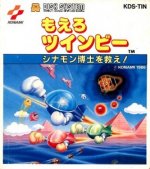
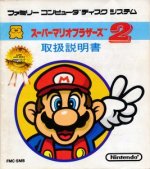
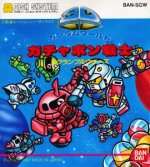
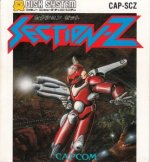
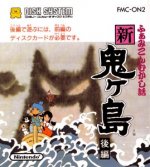

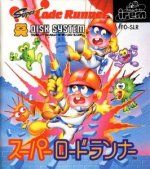
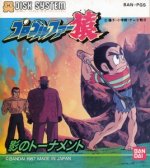
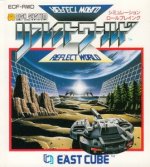
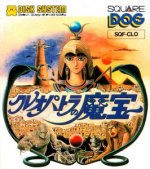

 Save time
Save time